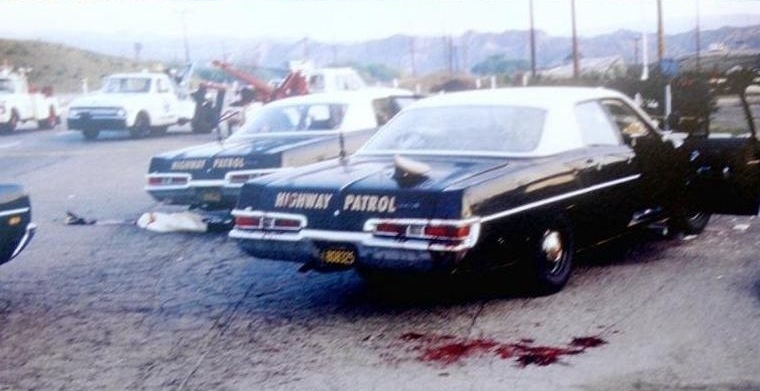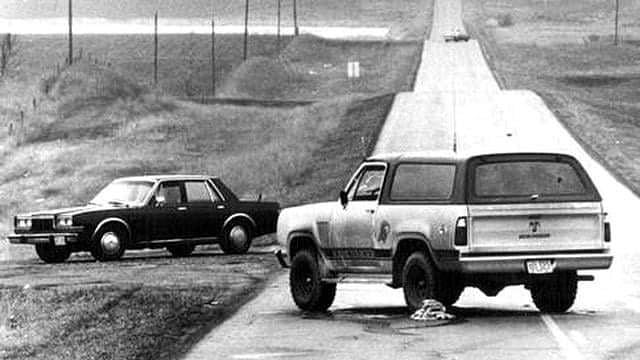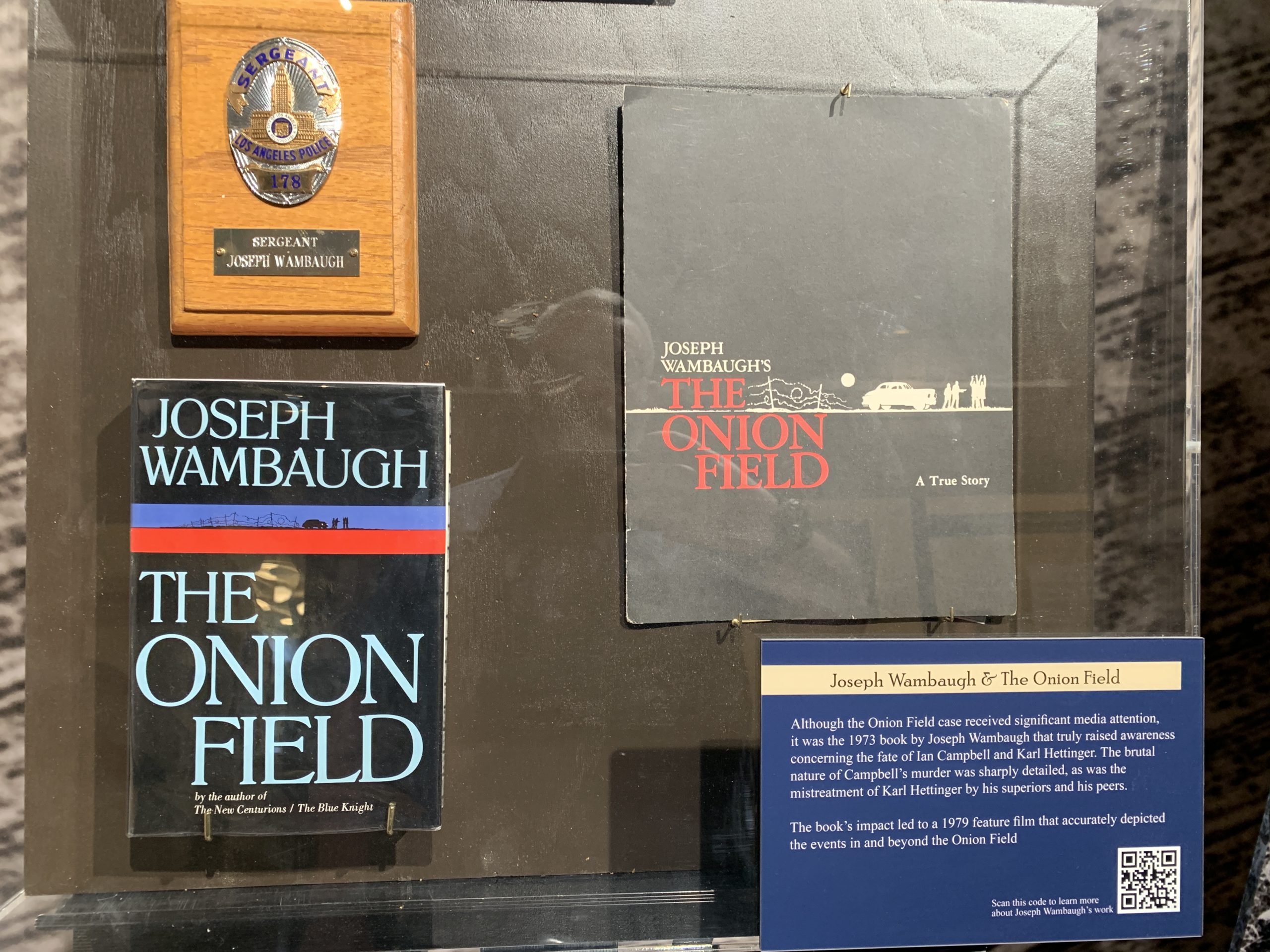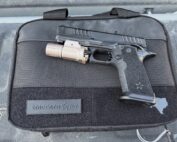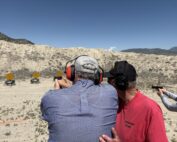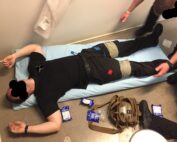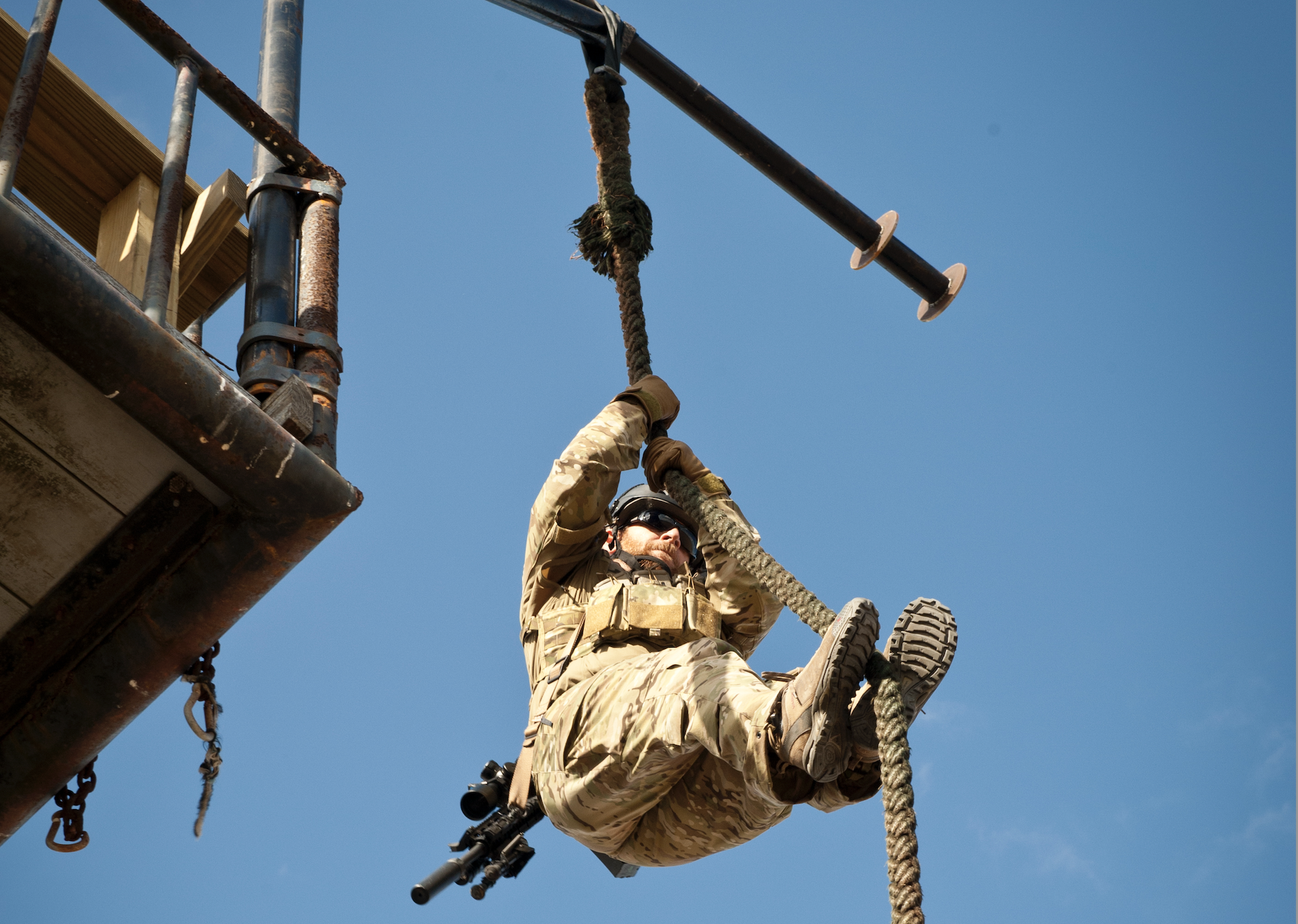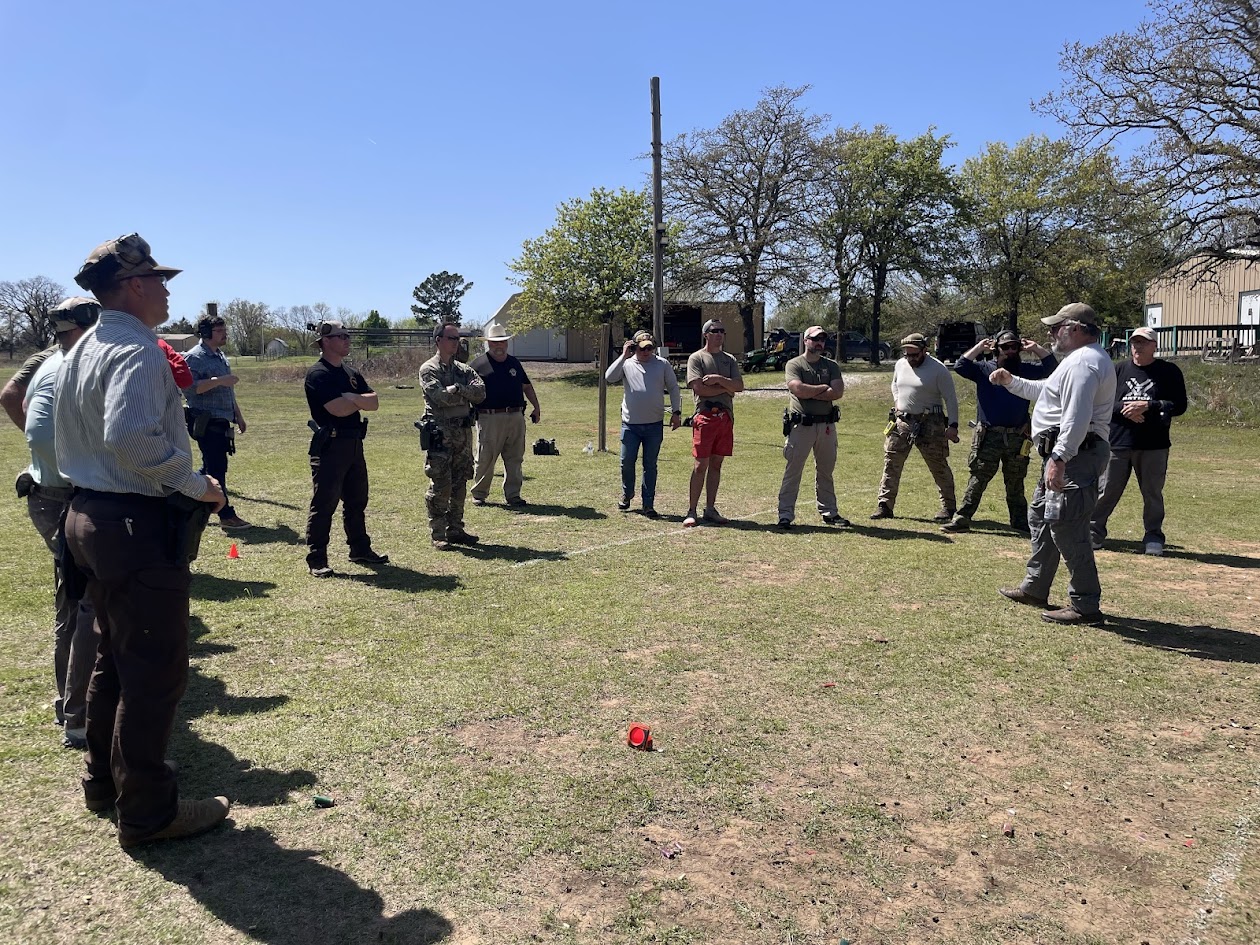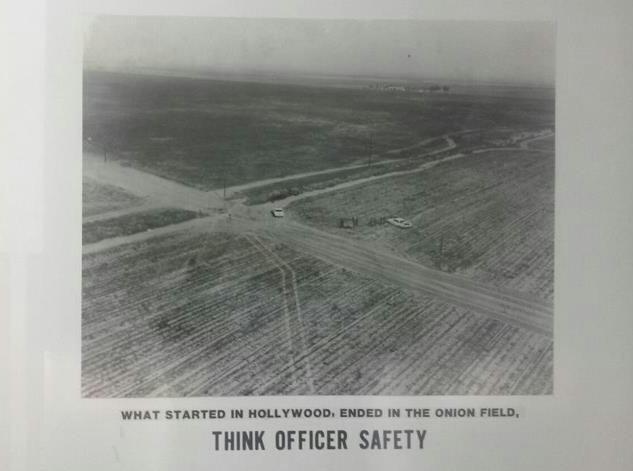
le-onionfield
Our History – Are There Lessons?
The United States Marine Corp excels at instilling its history into every Marine. What about the police and our history?
Now, I understand there are about 800,000 cops in various assignments, from corrections to the Presidential protective detail. And that those cops are working in over 18,000 different local, state, or federal entities. Individual organizations should share their history so officers and the public know their lineage.
Are there events all of us should be aware of? What are they?
The Onion Field
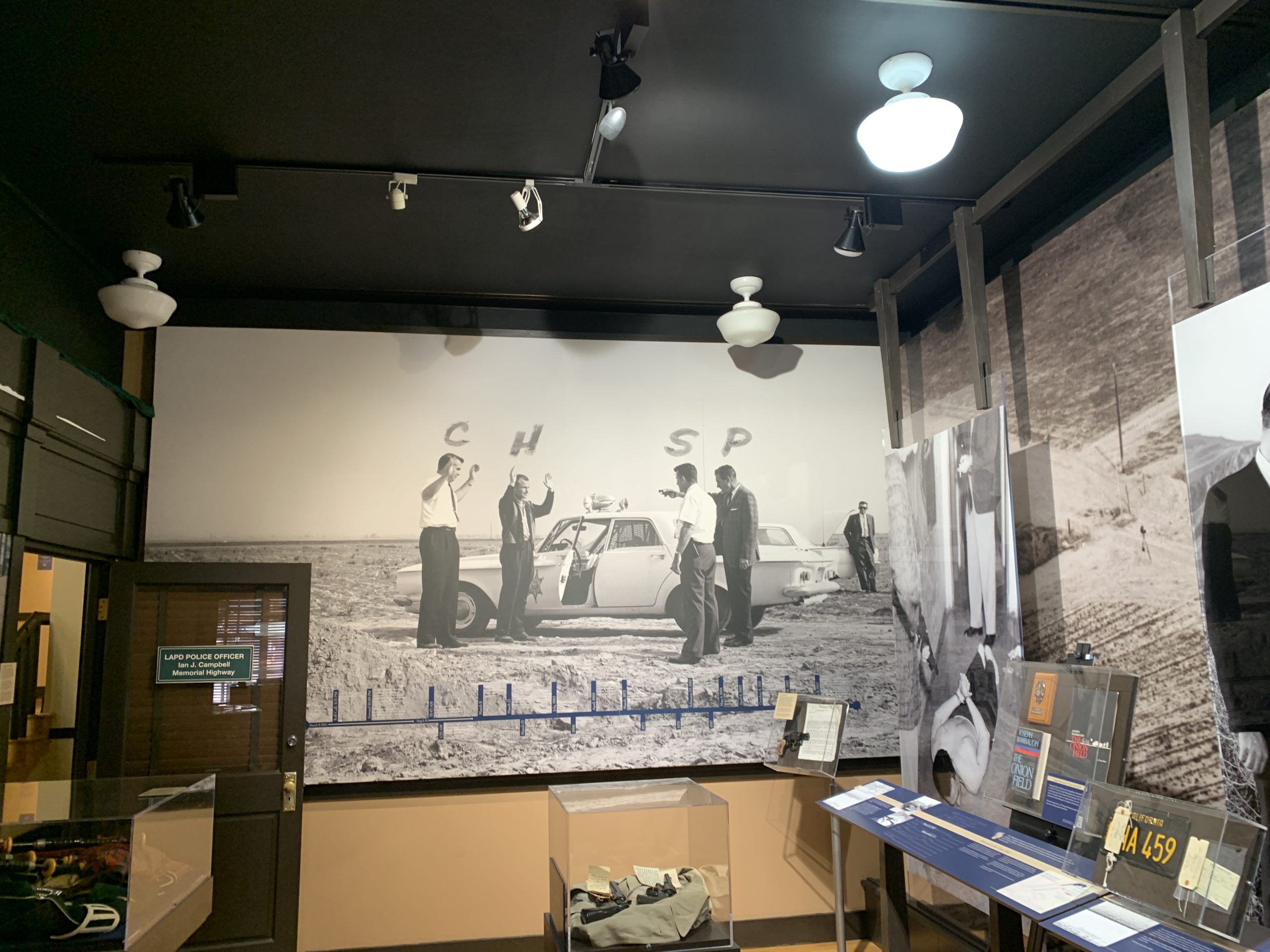
Inside the Los Angeles Police Historical Society exhibit on the kidnapping of both officers and the murder of Officer Campbell.
On March 9, 1963, two suspects kidnapped two Los Angeles police officers during a traffic stop. They were driven from the city up and over the Grape Vine into a Kern County onion field. There, the bad guys decided to kill the officers. The suspects murdered Officer Ian Campbell while Officer Karl Hettinger was able to flee.
This happened in the pre-portable radio era and before the advent of soft body armor. Could the use of backup guns have changed this outcome?
Long-time cop author Joseph Wambaugh wrote up the kidnapping, murder, and the aftermath in The Onion Field.
LAPD’s lead investigator later wrote Officer Down, Code 3, one of the early officer survival movement texts.
Newhall, CA
What about our high-risk vehicle stop tactics? Late on the evening of April 5, 1970, California Highway Patrol officers attempted to stop a vehicle reportedly brandishing a handgun. This was in Newhall, CA, the current home of Magic Mountain theme park. One two-officer car was behind the suspect vehicle, and a second car was setting up farther up the highway. While officers developed a plan, the suspects exited the highway early, pulled into a diner parking lot, and forced the encounter.
As we later saw in the FBI-Miami shoot-out, the suspects were hard-core criminals who had been shooting that day and had a plan.
The initial officers split their attention and efforts. The two suspects killed them. When the second unit arrived, they managed to call for help before engaging the suspects. The suspects murdered those officers as well. The four officers were George Alleyn, Roger Gore, James Pence, and Walter Frago.
A third CHP unit arrived and shot at the fleeing suspects. The suspects barricaded in a house before being in a stand-off with Los Angeles County sheriff’s deputies. One suspect killed himself, and the other was captured.
There have been numerous articles and books written on this event.
Norco Bank Robbery
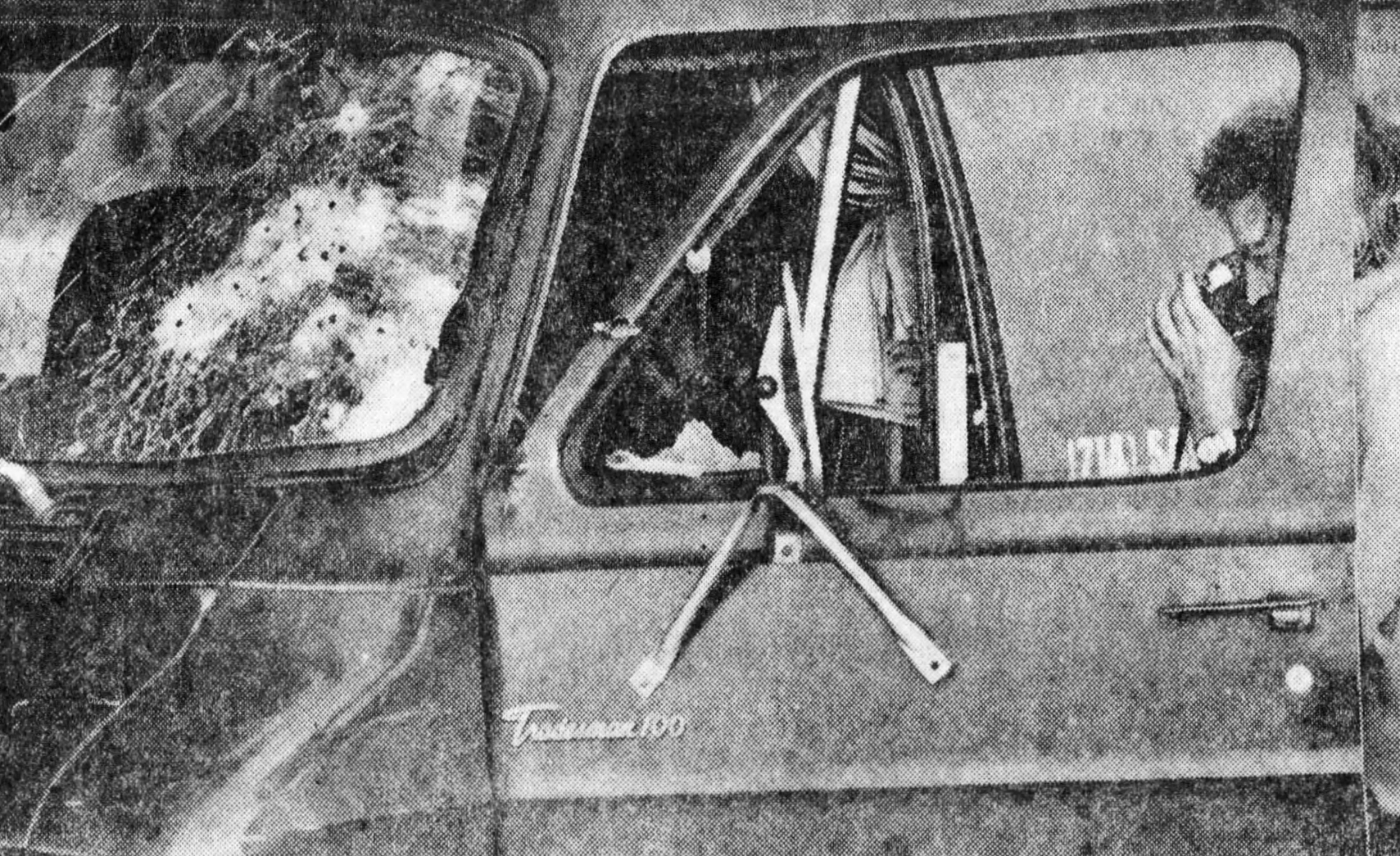
The suspects’ first vehicle being processed afterward. The owner had been held hostage inside until the van was abandoned. Photo from the OC Register.
In the 1920s and 30s, there was a time when patrol rifles were the standard, and then they went away. One event that pushed their resurrection was a 1980 bank robbery in the town of Norco, California. Two individuals involved in the survival, apocalypse movement recruited a few others to engage in a bank robbery to fund their plans. The suspects fielded an improvised explosive device plus shotguns, H&K rifles in 5.56mm and 7.62mm, AR-15s, and handguns.
The suspects stole a van and kidnapped its driver, holding him hostage in a cabinet in the van. The suspect driving the van was killed by a single pellet of 00Buck fired by a deputy early on. How the officers’ gunfire did not hit the victim is amazing.
As the pursuit continued through two counties, the suspects shot down a law enforcement helicopter with rifle fire. They also fired at any marked patrol car in range.

They also stole the work truck depicted here and used the equipment in the back as cover when shooting at other deputies and officers.
Eventually, the suspects crashed their vehicle and fled into a mountainous area. Gunfire from the suspects killed Deputy James Evans during this time. A second suspect killed himself rather than surrender, and deputies arrested the remaining three suspects.
There are several lessons to be learned – for patrol, dispatch, and administrators.
Medina, North Dakota
Another high-risk stop went bad in Medina, ND, in 1980. It occurred when U.S. Marshals and local officers tried to arrest a suspect for federal probation violations and tax evasion. There were also multiple individuals with the suspect. The local chief asked that the attempted arrest occur outside of town for the community’s safety.
The outcome was two Marshal’s Service deputies dead – Ken Muir and Robert Chesire – and several people on both sides wounded. The wanted suspect, Gordon Kahl, was killed months later in another shoot-out with local federal law enforcement in Arkansas.
How would you handle that event as a supervisor in today’s environment?
FBI-Miami Shoot-Out
Hopefully, the FBI-Miami shoot-out has not been lost to time, but how many are aware of it? Two former soldiers with a history of training and violence became serial bank robbers in the Miami area. The two suspects were using a car taken from a man they tried to murder in the Everglades. The man survived and made it out of the swamp to give the information to law enforcement. On April 11, 1986, FBI special agents found the suspect’s vehicle and attempted to stop it. That led to a protracted gunfight and the death of Special Agents Jerry Dove and Ben Grogan, along with both suspects.
These are just five events. Five events significantly impacted what law enforcement does and why we do it – just like Columbine and Parkland City have impacted our active killer response. The collective “we” in police work should better handle our history, the What’s and the Whys, and How those apply today.
Regardless of rank, all of us need to improve our historical knowledge and improve at passing it on. Reading for professional development is one way, and that should be encouraged. Audiobooks take away the time issue if you have a long commute to work.
Some Recommended Reading:
The Onion Field by Joseph Wambaugh, 1973;
Newhall Shooting – A Tactical Analysis: Survival lessons from one of law enforcement’s deadliest shootings by Mike Wood, 2013;
Norco ’80: The True Story of the Most Spectacular Bank Robbery in American History by Peter Houlahan, 2019 (note: there is a podcast by the same name from LAist Studio and Southern California Public Radio, albeit with a quite different editorial focus);
Bitter Harvest: Gordon Kahl and the Rise of Posse Comitatus in the Heartland by James Corcoran, 1990 may address the event. Otherwise, please visit Claude Werner’s post on it at thetacticalprofessor.net/2018/02/13/the-medina-north-dakota-shootout/
FBI-Miami Firefight: Five Minutes that Changed the Bureau by now-retired Special Agent Edmundo Mireles and Elizabeth Mireles, 2020.


 (No Ratings Yet)
(No Ratings Yet)